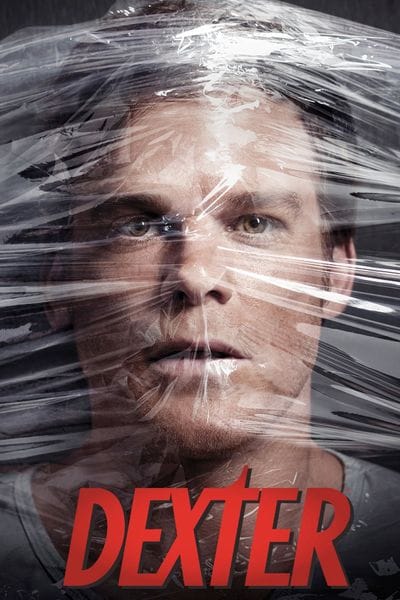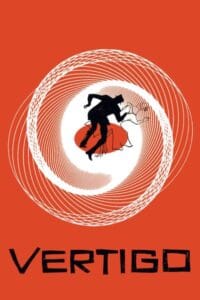Dexter is a popular American crime drama TV series that aired from 2006 to 2013. The show, based on the novel Darkly Dreaming Dexter by Jeff Lindsay, follows the life of Dexter Morgan, a forensic technician who leads a secret double life as a vigilante serial killer. Over its eight seasons, the show gained a huge following and critical acclaim for its unique plot and complex characters.
One of the key components that contributed to the success of the show was its setting – Miami, Florida. The vibrant city served as the perfect backdrop for Dexter’s dark and twisted world. In this article, we will take a closer look at where exactly in Miami Dexter was filmed and some interesting behind-the-scenes facts.
City Locations
Have you ever wondered about the real-life settings behind the gripping storylines of your favorite TV series? For fans of Dexter, the tantalizing blend of drama, suspense, and moral ambiguity unfolds across various iconic locations in Miami, Florida. But did you know that these stunning backdrops greatly contribute to the show’s unique atmosphere? As we explore the vibrant city landscapes where Dexter was filmed, we’ll dive into the intricate relationship between the show and its environments, revealing how the locales enhance the narrative and resonate with audiences.
Location Types
Dexter takes viewers on a journey through various distinct locales that serve not only as visual elements but also as vital storytelling devices. The show’s creators chose a remarkable mix of locations, from urban downtown areas to serene parks, reflecting the protagonist’s internal struggle. Key locations include the bustling streets of Miami, offering a vibrant city backdrop, as well as quieter corners, where Dexter Morgan can safely indulge his dark urges.
Urban Scenes
The urban settings featured throughout Dexter play a crucial role in establishing its thrilling tone. Locations such as the downtown skyline, with its towering buildings and neon lights, provide a bustling atmosphere that mirrors Dexter’s dual life as a blood spatter analyst by day and a vigilante killer by night. The juxtaposition of crime and everyday life is palpable, making viewers acutely aware of the tension embedded in Miami’s urban landscape.
Parks and Natural Beauty
In contrast, the serene parks and beaches depicted in the series highlight the beauty of Miami while also serving as places of contemplation for Dexter. For instance, scenes set in the lush, green spaces of Matheson Hammock Park or along the picturesque coastline illustrate the dichotomy of Dexter’s existence. Amidst vibrant natural beauty, his inner turmoil unfolds, emphasizing the complexity of his character and the show’s overarching themes of duality and moral conflict.
Location Styles
The stylistic choices made in filming locations significantly contribute to the show’s aura. The bright, sun-soaked scenes in Dexter create an enticing backdrop, captivating viewers even as they witness the more macabre aspects of the narrative. The use of natural light enhances the intensity of Dexter’s character while simultaneously invoking a sense of dread.
About Dexter
Dexter, which premiered in 2006, quickly captured the hearts of audiences with its provocative portrayal of a serial killer with a conscience. The series follows Dexter Morgan, a forensic blood spatter analyst for the Miami Metro Police Department, expertly blending the lines between right and wrong as he channels his psychopathic tendencies into a quest for justice against those who have escaped the legal system. Throughout the show, viewers are pulled into Dexter’s complex world, a dark reflection of Miami’s glamorous facade, which starkly contrasts with the gritty underbelly of crime and morality that he navigates. As Dexter grapples with his inner demons and relationships with family and colleagues, the show explores themes of identity, morality, and the nature of evil, keeping audiences captivated and questioning what justice truly means.
Dexter’s apartment scene in Dexter
One of the most defining settings in the series is undoubtedly Dexter’s apartment, which serves as his sanctuary amid the chaos that permeates his life. This space is not just a place for him to rest; it is a carefully curated reflection of his inner world. Visually, the apartment’s modern, minimalist aesthetic perfectly mirrors Dexter’s character traits, showcasing a distinct order that starkly contrasts with the turmoil and darkness that define his existence. Each scene set in his home invites the audience into the depths of his psyche, illustrating how he meticulously organizes every aspect of his life. The lack of clutter and the precision of his surroundings reveal an underlying desire for control, a response to the chaos inherent in his darker pursuits. It is within these walls that Dexter finds solace, and each decorative choice, from the sleek furniture to the strategic lighting, conveys his need for both comfort and the illusion of normalcy amid the sinister activities that lie just beneath the surface.
Dexter sees the Ice Truck Killer’s first victim scene in Dexter
The chilling moment when Dexter encounters the Ice Truck Killer’s first victim serves as a poignant example of the show’s remarkable ability to seamlessly weave together intricate character development and suspenseful storytelling. Filmed in stark, unsettling locations that evoke a sense of dread, this scene powerfully underscores the psychological horror that is inherent in Dexter’s world. The icy realism of Miami’s streets, with their bright sunlight contrasted against dark, twisted events, creates the perfect backdrop for the unfolding drama. The juxtaposition of the vibrant urban environment and the gruesome act of violence not only heightens the tension but also creates a lasting impact that resonates deeply with audiences. This moment captures the essence of Dexter’s moral complexities, leaving viewers grappling with their own emotions as they witness the chilling intersection of his dual identity as a forensic expert and a vigilante killer.
Dexter’s flashback scene in Dexter
Flashback scenes in Dexter serve as powerful storytelling devices that offer significant depth to his character by revealing his troubled and complex past. Filmed in various iconic locations around Miami, these moments are often set against strikingly contrasting backdrops—shifting from the brutal realities of his childhood, marked by trauma and loss, to the lush, vibrant surroundings of Miami, which are teeming with life and color. This choice of settings not only enhances the overall narrative but also serves as a visual metaphor for Dexter’s internal conflict. The juxtaposition of dark memories with the bright, lively environment allows viewers to explore the origins of his dark inclinations in a more profound way, inviting them to ponder how his past experiences shape his present actions and moral dilemmas. Through these flashbacks, audiences gain insight into the psychological complexities that drive Dexter’s duality, making his journey even more compelling and thought-provoking.
Dexter hits Paul with a frying pan scene in Dexter
In one memorable scene from the series, Dexter’s seemingly normal domestic life collides dramatically with the perilous nature of his dangerous double life when he unexpectedly strikes Paul with a frying pan. This pivotal moment unfolds in the familiar yet charged setting of Dexter’s kitchen—a space that is ordinarily filled with the comforting smells of home-cooked meals and the warmth of family interactions. However, in this instance, it is transformed into a battleground where the mundane meets the extraordinary, highlighting the intense conflict within Dexter himself. The choice of such a commonplace location to host this shocking act of violence serves to amplify the impact, underscoring the intrusion of brutality into the fabric of everyday existence. It also emphasizes the duality that defines not only Dexter’s character—who oscillates between a caring family man and a ruthless vigilante—but also the overarching themes of the show, which expertly navigate the complexities of morality and identity in a world where appearances can be deceiving.
The Ice Truck Killer kidnaps Debra scene in Dexter
The abduction of Debra by the Ice Truck Killer serves as a pivotal turning point in the narrative, injecting a raw sense of urgency and danger that transforms the entire storyline. This shocking event not only heightens the stakes for the characters but also captivates the audience’s attention, compelling them to engage more deeply with the unfolding drama. Filming this gripping scene in a dimly lit, claustrophobic space effectively amplifies the tension and emotions at play, making viewers acutely aware of the peril Debra faces.
The choice of location is particularly impactful; it not only mirrors the physical entrapment that Debra experiences but also reflects the psychological turmoil that both she and her loved ones endure. The oppressive atmosphere of the setting draws the audience deeper into the thriller aspect of the show, allowing them to feel the weight of fear and desperation that permeates the scene. As the plot progresses, this moment serves as a catalyst for character development and plot advancement, pushing the narrative into darker, more suspenseful territory.
Dexter stalks Miguel scene in Dexter
As Dexter stalks Miguel through the neon-lit streets of Miami, the backdrop of the city’s bustling nightlife adds a rich layer of complexity to their tense relationship. The night scenes are alive with vibrant energy—music pulsates from nearby clubs, laughter spills from crowded bars, and the aroma of street food wafts through the air—creating a stark contrast to the dark intentions that lurk beneath the surface of Dexter’s pursuit. This urban setting not only heightens the stakes but also intensifies the suspense of the scene, immersing viewers in a world where danger hides in plain sight. The flickering streetlights and shadowy alleyways invite audiences to witness the thrilling game of cat and mouse that unfolds in the shadows, as Dexter’s meticulous plans clash with Miguel’s obliviousness, making every moment charged with anticipation.
Conclusion
The filming locations of Dexter not only serve as distinct backdrops but also play a pivotal role in shaping the series’ narrative and emotional depth. Each location is carefully chosen to reflect the complexities of Dexter Morgan’s life, blending the vibrancy of urban life with the serene beauty of Florida’s landscapes. This juxtaposition embodies the intricate themes woven into the fabric of Dexter’s character, highlighting his dual existence as both a forensic blood spatter analyst and a vigilante serial killer.
As viewers journey through the streets, parks, and homes of Miami, they are not just observing a fictional world; they are being invited to ponder the delicate balance between good and evil, order and chaos. The contrasting elements of the cityscape, from bustling nightlife to tranquil waterfronts, serve to enhance the narrative tension and moral dilemmas faced by the characters. This captivating exploration of human nature and morality continues to resonate with audiences long after the show has ended, prompting discussions about ethics, justice, and the nature of darkness within us all. Each scene filmed in these locations leaves a lasting impression, enriching the viewer’s experience and deepening their connection to the story.







